Leksands – Sensors support the crisp bread production in Sweden

100 years of Swedish tradition: Leksands are Sweden's largest producers of crisp bread.
What is the most typical Swedish product? It does not take long to give the answer: crisp bread. Sweden's largest producer of the traditional round crisp bread is based in the small town of Leksand in Central Sweden. Also integrated: ifm as the automation specialist.
Peter Joon, Managing Director at Leksands Knäckebröd: "We use many different sensors since this is a very modern production and a highly automated process. To maintain the high productivity of 99.6 %, we need sensors we can trust. For this reason we are now using many sensors from ifm. They are of very good quality and function very well with out systems."
Lars Ohlner, Automation Engineer at Leksands Knäckebröd adds: "We use products from ifm because they are easy to configure and which are cost effective; they simply function reliably. We mainly use photoelectric and capacitive sensors and some flow sensors. We obtain high-grade and effective automation and a reliable production process."
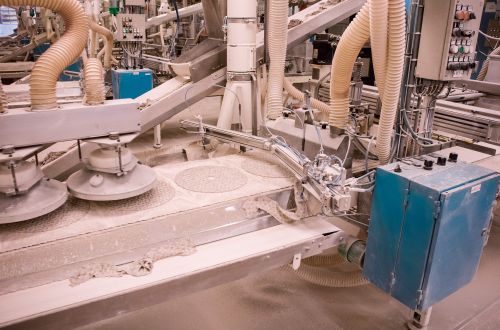

Picture 1: In spite of modern production: The traditional recipes are about 100 years old. Picture 2: The production is verified. Only perfect goods leave the plant.
Some particularly innovative sensors as examples: Capacitive sensors
The main ingredients of crisp bread are rye meal and finely ground rye and wheat flour. They are supplied to the mixing tools via various pipes. Capacitive sensors monitor the supply at the pipes or the level in the temporary storage tanks. Capacitive sensors are distinguished by detecting different materials, even through the tank wall, unless they are of metal. If a pipe is no longer completely filled with flour, the capacitive sensor detects this state and sends a switching signal to the controller.
Often, several capacitive sensors are used on storage tanks or silos, for example at the very top, to signal a possible overflow in time or at the very bottom of the silo to signal a critical empty state
Potentiometers are used to adjust the sensors after installation. the switch point is adjusted depending on the wall thickness of the pipe and the type of the medium to be detected. The new KI6000 sensors from ifm are to be set particularly precisely: The unique 12-point LED signal display makes it much easier for the user to set the optimum switch point, which is in the centre of the display. The green LEDs on either side of the switch point indicate the reliability of the switch point. Deposits, material changes etc. are directly displayed on the sensor and the user can readjust perfectly the switch point as needed. That means that an imminent error can be detected in good time and avoided.
If help is needed with the effects of process changes this is much easier to explain and rectify with the clear switch-point visualisation. Over the phone the user can describe the LED behaviour and a support engineer can easily advise corrective measures.
By using non-contact potentiometers, the new units have the high protection rating IP 69K and are perfectly suited for medium temperatures up to 110 °C. Moreover, different functions such as PNP/NPN or NC/NO can be selected. The ifm sensors are equipped with IO-Link and prepare the user optimally for Industry 4.0.
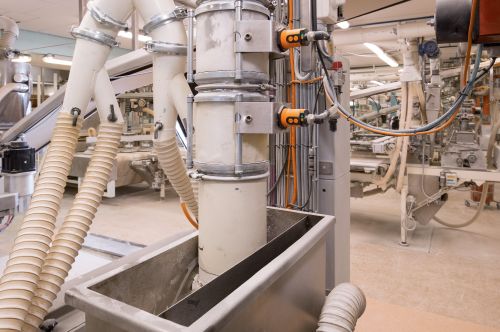
Capacitive sensors detect the flour through the walls of the pipes.
O6 photoelectric sensor
Numerous diffuse reflection sensors are installed at the conveyor belts in the production plant. They monitor the flow of material. These are, for example, individual slices of crisp bread but also completely packed products in the dispatch area.
In most cases, they use the ifm diffuse reflection sensors of type O6 at Lecksands Knäckebröd.
Their optical performance is excellent. They are distinguished by a particularly noise-immune background suppression while the range of up to 200 mm is independent of the object colour. This is important since the crisp bread slices have a different surface depending on the type and recipes.
Even in the event of vapour, dust and highly reflective environments the automatic sensitivity compensation guarantees a reliable function. The clean round light spot ensures a consistent light distribution in the light cone. Scattered light around the operating range is avoided. The compact O6 WetLine is designed for use in wet areas. The two setting potentiometers are fitted with a double seal. Front pane and potentiometer are embedded flush to allow residue-free cleaning. These compact powerful units from ifm can also be supplied as through-beam and retro-reflective systems.
The particularly resistant stainless steel housing with protection rating IP 68 / IP 69K ensures reliable and long-time use even under severe conditions.
The O6-series sensors are now also available as versions with IO-Link. Via this interface, the range, sensitivity, light-on/dark-on modes, switching delay or deactivation of the operating elements can, for example, be set remotely.
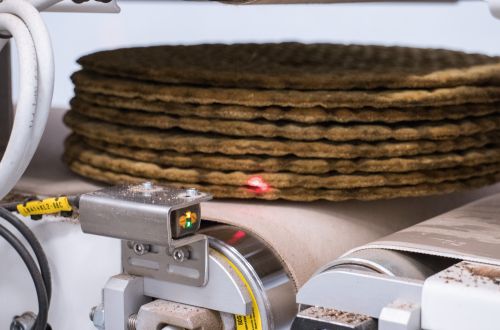
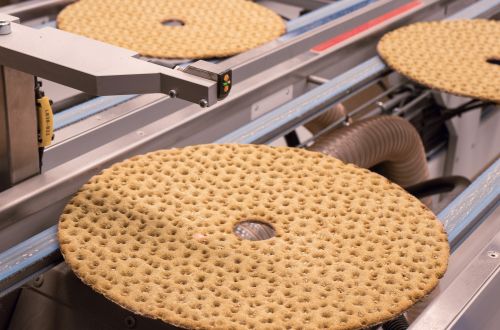
Picture 1: The ifm O6-series diffuse reflection sensors monitor the flow of material. Picture 2: Typical of Leksands' crisp bread: the round shape with a hole in the middle.
MID flow sensor
Besides the grain, water is an elementary part of the crisp bread dough. In the field of dough production, a magnetic-inductive flow meter from ifm is used.
These units feature high accuracy, measurement dynamics and repeatability. They are suited for conductive media as from 20 µS/cm. The 4-digit alphanumeric LED display is highly visible. Besides the volumetric flow, the units also measure temperatures from -10 to 70 °C. Furthermore, an additional measuring point is no longer needed thanks to the integrated temperature monitoring. The robust compact housing, use of resistant materials and pressure rating up to 16 bar allow flexible use.
Using the IO-technology, process values are not only available via the analogue output but also digitally. Conversion losses during measured value transmission are a thing of the past. Saving all sensor parameters not only allows an easy replacement of sensors but also a simple and quick configuration and remote parameter setting. The user is well prepared for Industry 4.0 with the new IO-Link functionality.

The amount of water for dough production is precisely detected by means of magnetic-inductive flow meters.
Continuing with ifm in the future
At Leksands, they have been using the reliable and long-life sensors from ifm for a long time. No wonder that you can find ifm sensors which are already older than 25 years in some places in the plant. Also in the future, they want to tackle new challenges in automation with ifm as their partner.
Peter Joon: "For the future we have to develop sensors that can perceive the different texture and shades of the bread. ifm is part of the development of these sensors. We have created a new area which is based mainly on ifm products and which has proven its worth so that we will further develop our future areas with sensors from ifm."
He concludes: "ifm is our first choice when it comes to sensors because they have the products we need."
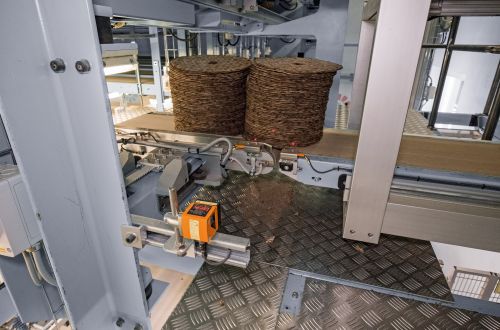
Distance measurement for position detection across longer distances: O1D with time of flight technology.
